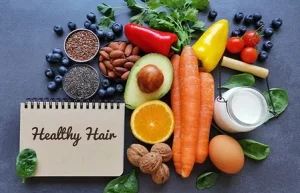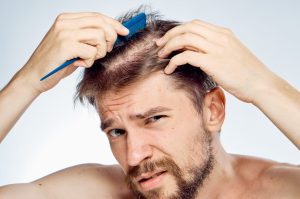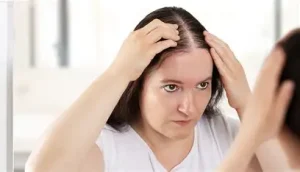Hair fall is an increasingly common concern for men and women across all age groups. While shedding 50–100 strands a day is considered normal, excessive hair loss can signal deeper health issues, lifestyle imbalances, or environmental stressors. In this detailed feature, we explore the underlying causes of hair fall and provide practical, expert-approved strategies to reduce shedding and promote lasting hair health.
Understanding the Root Causes of Hair Fall: Why Your Hair Might Be Shedding More Than Usual
The first step in effectively managing hair fall is identifying its root causes. Several factors contribute to increased hair loss, and most are closely tied to a person’s genetics, health condition, and daily habits.
Genetics remains one of the leading causes of hair fall. Both male-pattern and female-pattern baldness are hereditary and typically follow a predictable pattern of thinning or receding hairlines. These conditions are medically termed androgenetic alopecia.
Hormonal imbalances also play a significant role. Conditions such as thyroid disorders, pregnancy, menopause, or polycystic ovary syndrome (PCOS) disrupt the normal hormonal balance, triggering hair fall. In women, post-partum shedding is particularly common due to sudden hormonal changes.
Nutritional deficiencies cannot be overlooked. Hair requires specific nutrients like iron, biotin, zinc, and vitamin D to grow and remain strong. When the body lacks these essentials, the hair follicles weaken, leading to excessive breakage and hair fall.
Other contributing factors include scalp infections such as dandruff, ringworm, and dermatitis, which inflame the scalp and hinder healthy follicle function. Moreover, emotional and physical stress, whether due to illness, trauma, or lifestyle overload, can lead to a temporary condition known as telogen effluvium—where more hairs than normal enter the resting phase and shed simultaneously.
Also Read : Top 5 Hair Oils for Healthy, Shiny, and Strong Hair

A Nutrient-Rich Diet: Why What You Eat Can Significantly Influence Hair Fall
Diet plays a critical role in maintaining strong and healthy hair. Experts agree that deficiencies in key nutrients directly contribute to hair fall, making a balanced, nutrient-dense diet one of the most effective long-term strategies.
Foods rich in protein such as eggs, legumes, fish, and lean meats provide the building blocks for keratin, the structural protein of hair. Iron, found in leafy greens, lentils, and red meat, helps transport oxygen to the follicles, promoting growth.
Equally important are biotin and zinc, often found in nuts, seeds, and whole grains, which support follicle strength and reduce breakage. Omega-3 fatty acids, found in fish, flaxseeds, and walnuts, enhance scalp hydration and reduce inflammation, creating an ideal environment for hair growth.
During high-humidity seasons like the monsoon, hair fall often spikes. Including foods such as black sesame seeds, pumpkin seeds, and fenugreek can help counteract seasonal shedding due to their rich nutritional profile.
Effective Scalp and Hair Care Routines to Minimize Hair Fall and Improve Hair Texture
Daily hair care practices significantly impact the health of your scalp and strands. Using the right products and techniques can strengthen hair from the roots and reduce breakage caused by environmental or mechanical stress.
Start by massaging the scalp regularly using natural oils like coconut, rosemary, or peppermint oil. These oils stimulate blood circulation, promote relaxation, and improve follicle nourishment. Scientific studies have found rosemary oil in particular to be as effective as minoxidil in improving hair thickness.
Home remedies like onion juice, rich in sulfur and antioxidants, have gained popularity for their antibacterial properties and follicle-stimulating effects. Aloe vera, when applied directly to the scalp, soothes irritation and unclogs blocked follicles.
Using a mild, sulfate-free shampoo and conditioner suited to your scalp type is crucial. Harsh cleansers can strip away natural oils and aggravate dryness, leading to increased hair fall. Also, avoid washing your hair with hot water, as it can weaken the hair shaft and cause breakage.

Lifestyle Adjustments: How Stress, Sleep, and Hydration Influence Hair Fall Patterns
Lifestyle factors have a deeper impact on hair fall than most people realize. Chronic stress triggers hormonal changes that push hair follicles into a premature resting phase. Managing stress through mindfulness practices like yoga, meditation, or deep breathing exercises can effectively lower cortisol levels, reducing hair loss.
Quality sleep is equally important. The scalp, like the skin, repairs itself during deep sleep. Aim for at least 7–8 hours of rest each night to encourage healthy follicle activity.
Staying hydrated also supports a healthier scalp environment. Dehydration can lead to dry, brittle hair and increased breakage. Drinking sufficient water and using a water softener or filter during showers can minimize the harmful effects of hard water on hair texture and fall.
Smart Styling Practices to Prevent Damage-Related Hair Fall
Aggressive styling habits contribute significantly to hair fall. Regular use of heat styling tools, chemical straighteners, and dyes can strip away the protective outer layer of the hair, making it more prone to damage.
If you must style your hair with heat, always use a heat protectant and avoid high temperatures. Let your hair air-dry as often as possible and steer clear of hairstyles that pull tightly on the roots, such as ponytails or braids.
Brushing wet hair can cause unnecessary strain. Instead, use a wide-toothed comb and detangle gently when the hair is damp or dry. Trimming your hair every 6–8 weeks helps prevent split ends from traveling up the hair shaft and reduces overall breakage.
Targeted Medical and Topical Treatments for Chronic Hair Fall Issues
If natural remedies and lifestyle changes don’t yield noticeable improvements, it might be time to explore clinical treatments. Minoxidil, an FDA-approved topical medication, is widely used to stimulate hair growth and extend the active growth phase of hair. It’s available over the counter and suitable for both men and women.
Advanced procedures such as Platelet-Rich Plasma (PRP) therapy, which involves injecting growth factors from your own blood into the scalp, have shown promising results in clinical studies. Low-Level Laser Therapy (LLLT) is another non-invasive option that boosts circulation and revitalizes dormant follicles.
Before starting any medical treatment, it is vital to consult a qualified dermatologist or trichologist. They may recommend blood tests to diagnose underlying causes such as anemia or thyroid disorders, which could be fueling your hair loss.

When to Seek Professional Help: Recognizing the Signs of Severe or Chronic Hair Fall
While occasional hair fall is natural, there are times when medical attention becomes necessary. If you experience sudden, patchy hair loss, notice bald spots, or see a consistent increase in hair shedding over weeks, it’s essential to consult a healthcare professional.
Conditions like alopecia areata, scalp psoriasis, or autoimmune disorders often manifest through unexplained hair loss and need specialized treatment.
Timely diagnosis and intervention can make a significant difference in controlling hair fall and restoring hair health effectively.
A Holistic Strategy Is Key to Managing Hair Fall and Boosting Hair Growth
Combating hair fall requires a multi-faceted approach. From addressing internal causes like nutrition and stress to practicing mindful hair care and exploring advanced treatments, it’s crucial to treat the condition from all angles.
Remember, healthy hair is not just a cosmetic concern—it often reflects your overall well-being. By following the strategies outlined above, you can take control of your hair fall issues and enjoy stronger, thicker, and more resilient hair.

